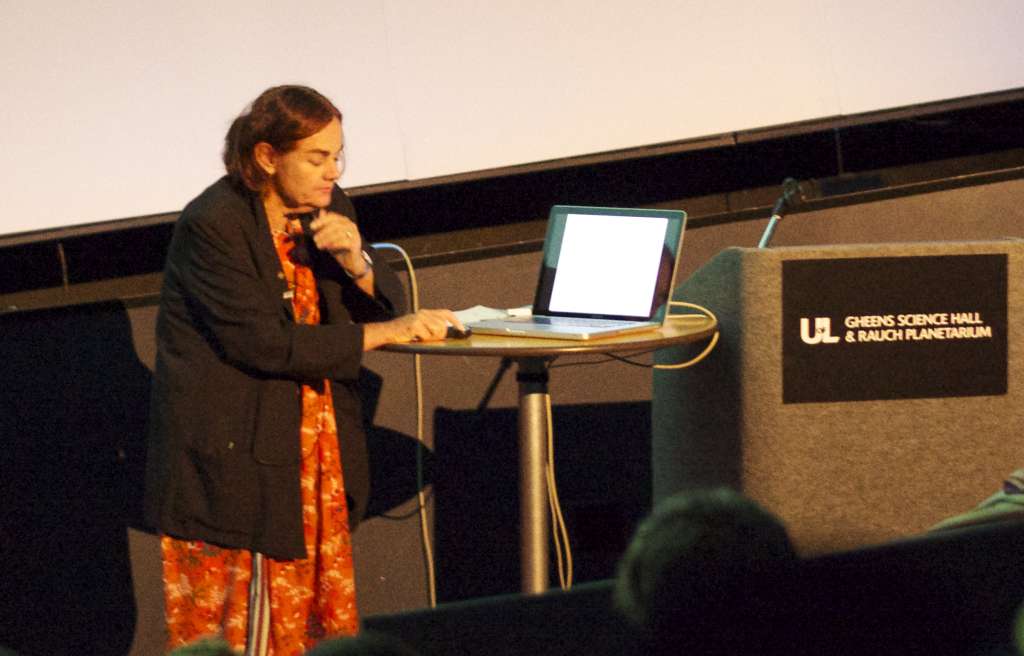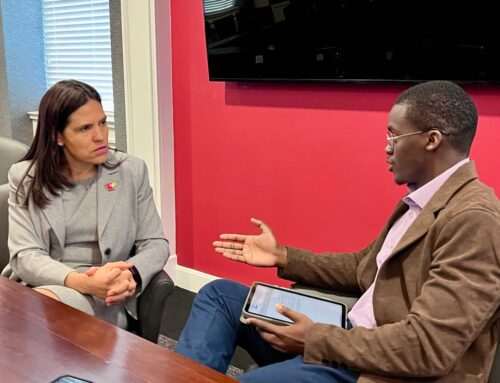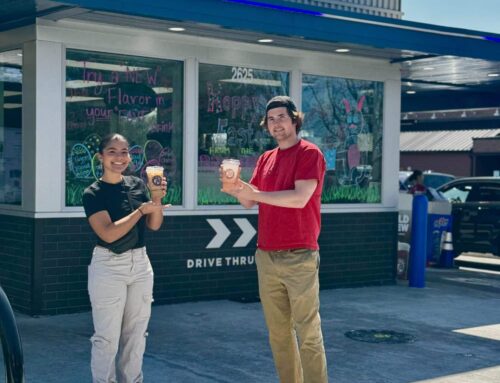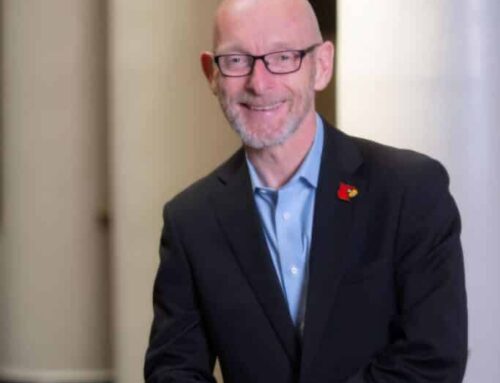By: Landon Lauder and Sarah Pennington
The 13th annual Bullitt Lecture in astronomy started on a high note. Three U of L students were awarded with the title of Bullitt Scholar for showing outstanding dedication in astronomy in the classroom, in addition to substantial astronomical research. These three distinguished students were Brian Enders, Eric File and David Warder.
The Bullitt lectures focus on multiple subjects, including math and law, established in memory of William Marshall Bullitt who was a lawyer by practice, but a fully educated man by mind. A Louisville native and Brandeis School of Law graduate, Bullitt wanted to promote the study of many subjects in academia; thus the Bullitt Lecture Series was established.
The true star of the night was the distinguished Virginia Trimble from the University of California, Irvine. Having obtained an undergraduate education from UCLA and attending the California Technical Institute for graduate school, Dr. Trimble lectured about the interdisciplinary success in the field of science, which has been responsible for many of the significant scientific discoveries throughout history.
“On balance, people who are willing to cross disciplinary lines and work with colleagues from very different territories are usually the ones who make contributions that we remember,” Trimble noted. Such was true with many early, foundational revelations of modern science. Henry Moseley, a physicist, was able to perform many experiments across chemistry and physic.
These cross-disciplinary experiments and his reasoning were profound. We have him to thank for correcting errors in the original periodic table of elements created by Mendeleev. However, other scientists seeking to cross the subjects of Astronomy, Chemistry, and Physics were not as fortunate in not only entering science, but also were not well accepted.
Trimble presented the other side of science, which is often forgotten in a galaxy of Newtons, Einsteins and Hawkings. Female scientists also forged an interdisciplinary path in science. Cecilia Payne-Gaposchkin was one of Trimble’s examples of powerful women in merging scientific fields. Payne-Gaposchkin crossed physics and astronomy when she proposed the most abundant elements in stars and the universe were hydrogen and helium.
However, her theory was not accepted until many years later simply because she was a female. Trimble stated, “You could make a male scientist in one generation, but it took two generations to make a female scientist. I think that may still, to a certain extent, be true.”
Females who wanted to accomplish significant work in science often partnered with their male counterpart, whether it was her brother, husband or father, “Even my generation, the women who became scientists virtually all had fathers, maybe an older brother…who did something quantitative.” Caroline Herschel, brother of Willaim Herschel, who discovered Uranus, studied with him in order to become a pillar of the scientific community.
Fortunately, some women were still able to contribute to science without depending on a male counterpart. Rosalind Franklin was the first scientist to “take a picture” of the structure of DNA, leading to Watson and Crick successfully cracking the code of DNA’s molecular structure.
“Willingness to accept things from other people’s territories is, I think, very important. That’s something that university administrators are beginning to understand as we develop interdisciplinary programs,” Trimble said. “Crossing territorial boundaries is, in general, a good thing to do, but you need the territories to start with. You need experts.”
According to Dr. Trimble, “The history is written by the winners.”





